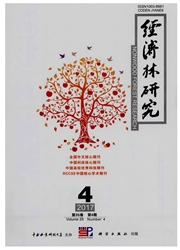

 中文摘要:
中文摘要:
为了探讨扁桃花芽抗寒性关键指标的鉴定参数,为选育抗寒性品种提供理论基础,以15个扁桃品种花芽为试材,采取人工模拟环境的方法对花芽进行不同低温(-15~-35℃)的处理,测定每品种花芽各个梯度的电解质渗透率、可溶性糖含量、可溶性蛋白含量、脯氨酸含量、MDA含量、SOD活性、POD活性,以及CAT活性,电解质渗出率应用logistic方程建立回归模型,确定其半致死温度,所有指标最后应用隶属函数法以及主成分分析法综合评价扁桃花芽的抗寒性。结果表明:随着温度的降低电解质渗出率符合"S"型变化曲线,确定半致死温度在-11.4~-24.87℃之间,应用隶属函数法与主成分分析法分析所得扁桃花芽抗寒性的强弱基本一致,野扁桃的抗寒性最强,综合评价抗寒性表现从强到弱依次为:野扁桃、美国引进品种、本地主栽品种。
 英文摘要:
英文摘要:
In order to discuss the identification parameters of almond flower bud and lay a theoretical foundation for selecting cold-resistant varieties,taking flower buds in fifteen almond varieties as test materials,the indices were determined,such as leakage ratio of electrolyte,soluble sugar content,soluble protein content,proline content,MDA content,SOD activity,POD activity and CAT activity,after flower-buds were treated by different low temperatures from-15 to-35 ℃) under the condition of artificial simulated environment.Semi-lethal temperature of flower-bud was determined by establishing logistic regression model on leakage ratio of electrolyte.Finally,cold resistance of different almond varieties was synthetically evaluated by using membership function method and principal component analysis method.The results indicate that leakage ratio of electrolyte shows "S" curve with decreasing of temperature,and semi-lethal temperature of different varieties ranges from-11.4℃ to-24.87℃.The order of cold resistance evaluated by membership function method was basically identical with by principal component analysis method,and Amygdalus ledebouriana Schlech has the strongest cold resistance.The order of the varieties based on cold resistance from strong to low by using comprehensive assessment is A.ledebouriana Schlech,introduced US varieties,local varieties.
 同期刊论文项目
同期刊论文项目
 同项目期刊论文
同项目期刊论文
 期刊信息
期刊信息
